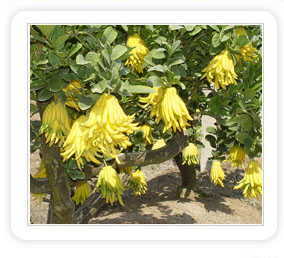Soilless Culture of Golden Bergamot
Soilless cultivation of bergamot is a successful cultivation technique in recent years, using natural substrate (such as crushed straw, sawdust, peat, peat, sand, etc.) or artificial substrate (such as rock wool, perlite, etc.) instead of soil, or even without any substrate, directly soaking and spraying plant roots with nutrient solution, which is also called nutrient solution cultivation. The soilless cultivation of bergamot can be separated from the soil completely. Compared with the traditional soil cultivation, it has obvious advantages and has a very attractive broad development prospect. However, in addition to the advantages and potential of soilless cultivation of golden bergamot, it also has some disadvantages. For example, soilless cultivation requires not only the management of protective facilities, but also the selection of substrate and the preparation of nutrient solution. The various physical and chemical properties, biological characteristics of different substrates and the ratio of chemical elements in nutrient solution are much more complex than traditional soil tillage, so it is difficult for ordinary farmers to master and apply them comprehensively. Fortunately, Jinhua Jinlin bergamot Development Co., Ltd. has successfully developed an "organic ecological soilless cultivation technology", which hunts the advantages of soilless cultivation, but it is simple and practical, that is, on the premise of ensuring the advantages of soilless cultivation, simplify production technology, reduce production costs, and facilitate popularization and application, as long as planting according to the technical methods provided by Jinlin bergamot Company can be successful. (1) the advantages of soilless cultivation. Without the restriction of land conditions, soilless cultivation has changed the traditional concept and soil farming methods of "living in all things in soil". Crops can be cultivated in unsuitable places such as sand and gravel and barren land. This can not only create economic benefits, but also beautify the environment and purify the air. two。 The labor intensity is small, the amount of water and fertilizer is reduced, soilless cultivation does not need the cumbersome links in traditional tillage, such as ploughing, weeding, soil disinfection, topdressing and so on, the scale of unit labor management can be greatly increased, and the labor intensity decreases obviously. 3. The number of diseases and insect pests decreased obviously, and soilless cultivation could prevent the occurrence of many kinds of malignant diseases transmitted by soil-borne pathogens, cutting off an important transmission channel of diseases and insect pests; in addition, it artificially improved the rhizosphere micro-environment and promoted the plant to grow healthily, enhanced its own disease resistance, and avoided soil salinization and continuous cropping yield reduction caused by salt accumulation and continuous cropping for many years in soil cultivation. 4. High quality and high yield, all kinds of environmental factors can be controlled artificially. Therefore, it can better coordinate the relationship between aboveground and underground, vegetative growth and reproductive growth, and it is easy to give full play to the potential of high yield. Production and experiments showed that soilless culture not only increased the yield, but also significantly promoted the growth rate of bergamot, and the appearance quality and physicochemical properties of the products were also improved in varying degrees. 5. It is convenient for factory production, and soilless cultivation fully shows that agriculture can produce crops mechanically and automatically, just like industrial production, and plant growth is completely controlled by manual work. (2) the advantages of soilless cultivation of bergamot: 1. The production cycle is short, which is one year earlier than that of conventional soil-cultivated bergamot; the profit of the product is very high, which is four times the value of conventional soil-cultivated bergamot; and the yield per unit area is high, which is four times that of conventional soil-cultivated bergamot bonsai.
Related
- A course of planting techniques and methods on how to grow carrots
- How to plant the latest tulips?
- Is it better to pick tea in the morning or in the afternoon? When is the best time for tea to be picked? what is the third or fifth tea?
- Launch Yuanxiao Happy combination Haocha + Tea Yuan healthy Taste
- Penghu Tourism "Fireworks 20 Parade with You"
- 2022 West Lake Happiness holds "Digital Revitalization Voucher" and draws iphone13 and laptop.
- Banqiao Fuzhou social houses are designed to change start-up combined with police elimination to create a safe and livable environment
- The convenient measure of "mechanical weeding" in Xinbei has been abused and the Agriculture Bureau has imposed heavy penalties on the illegal land consolidation.
- Changgeng University Joins Hands with Four Memory Factories to Rescue Memory Talent Shortage
- The list of Taiwan's top 100 MVP managers is listed by the Director-General of the Farmers' Association of Sanxia District.



